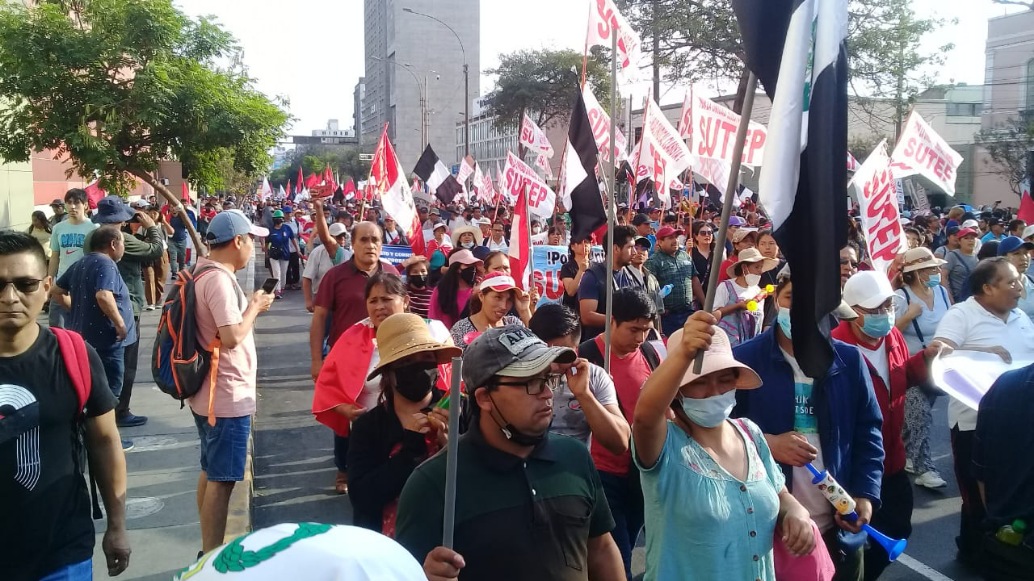Por corresponsal desde Lima
Hoy 19 de enero ha sido un día decisivo para el país. Cada hora y día que pasan, la lucha en las calles alcanza una situación solo vista en momentos de grandes cambios y revoluciones.
A pesar de la masacre que terminó con la vida de mas de 50 trabajadores y estudiantes, no se ha podido detener las movilizaciones. Y Dina y la derecha, no pueden gobernar el país. Es así como Perú, se encuentra, como ya hemos dicho, en una crisis crónica de las instituciones y todo el régimen burgués que tiene que resolverse en los próximos días.
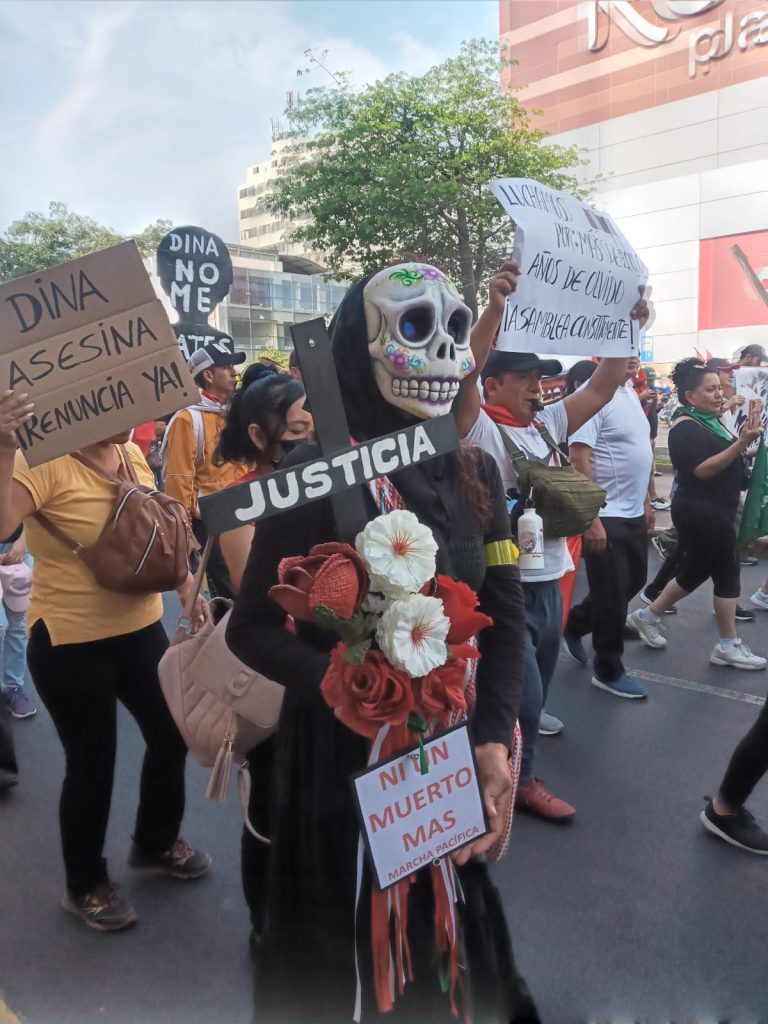
El Aymarazo, terminó acelerando la intensidad y extensión de la rebelión social, no solo al oriente sino también al norte del país, sumando bloqueos en 139 lugares, y las movilizaciones de principio de semana en la capital y su barrio de Miraflores con más de 10,000 personas, han sido la entrada en calor para irrumpir en La Capital en el día de hoy con manifestaciones desde las primeras horas de la mañana y que no han concluido aún, mientras escribimos estas líneas.
A medida que pasan los días, la posibilidad de la renuncia de Dina Boluarte y el cierre del congreso, crece con más fuerza ya que la única respuesta desde el Gobierno es la que expresa con crudeza el congresista de derecha, Jorge Montoya «más balas para los vándalos» y la misma Dina hoy, manifestando que cumplirá con la constitución fujimorista y continuará la criminalización de la protesta.
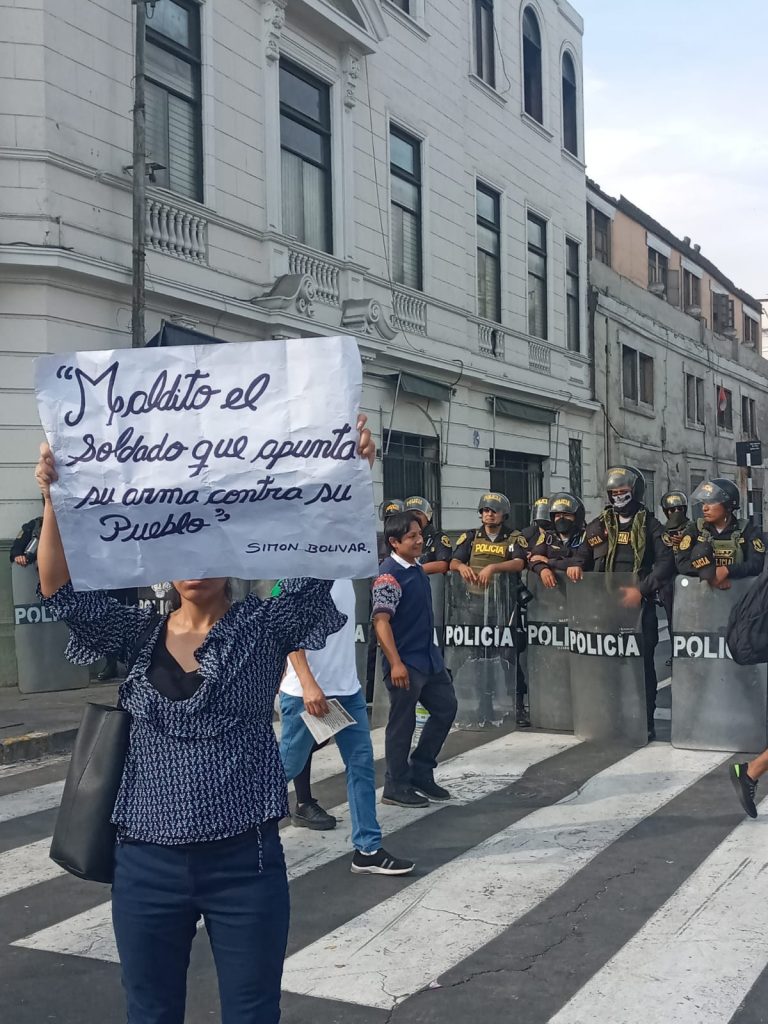
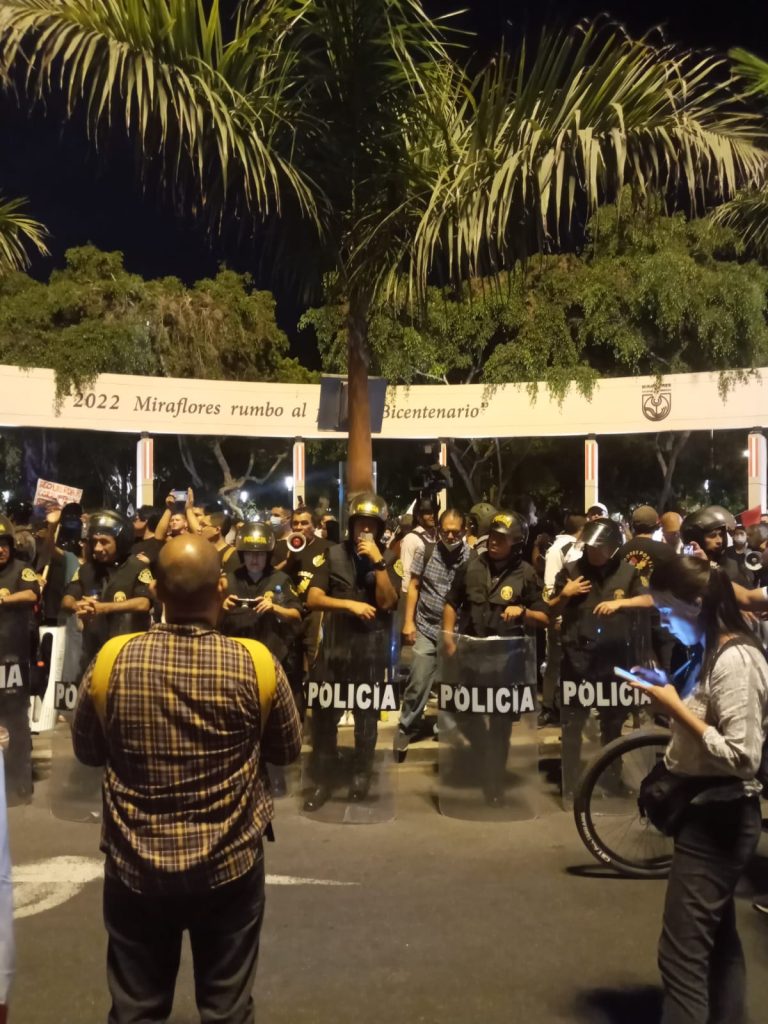
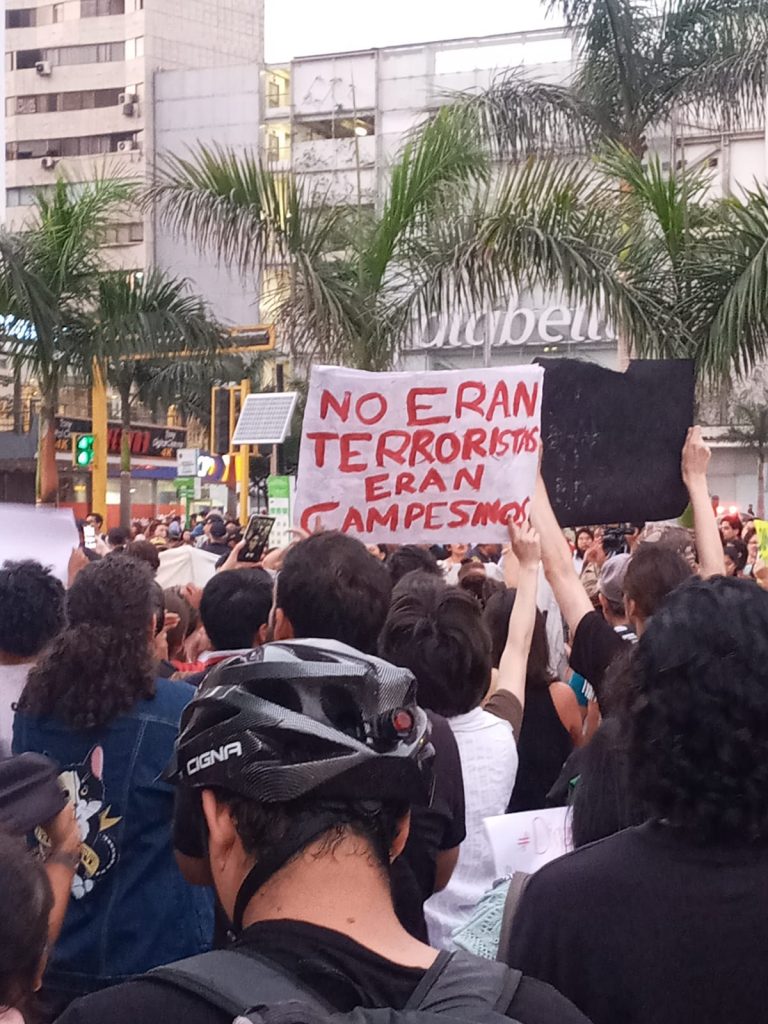
Producto de esa política es que la dictadura cívico-militar, haya desenvuelto una estrategia de cacería de brujas, al detener autoritariamente a varios dirigentes del Frente de Defensa de Ayacucho (FREDEPA), de la Plaza San Martin, amedrentar a dirigentes de la Asamblea de los Pueblos, asesinar selectivamente como es el caso del dirigente cusqueño Remo Candia y sumar nuevas víctimas fatales en el día de hoy. Todo esto bajo la fabulación de que los dirigentes son “terroristas” o son parte de una conspiración internacional dirigida por Evo Morales o los Ponchos Rojos, sin mostrar las pruebas fehacientes de semejante alucinación.
La segunda marcha de los 4 suyos debe concluir con las tareas que dejo la primera: romper con el sistema capitalista
Es en este marco de una polarización (entre las mayorías pobres y minorías ricas), forzada por la derecha conservadora y reaccionaria, que hoy jueves ha comenzado lo que algunos han denominado la Marcha de los 4 Suyos. Esta denominación hace referencia a la rebelión popular del 2000 que termino con la dictadura fujimorista que tenía como fin no solo derrocar a la dictadura, movilizando cientos de miles en todo el país, sino el de desarrollar una nueva democracia sin explotación u opresión de una clase sobre otra.
Esta tarea fundamental no fue alcanzada porque se paso de un régimen político mafioso cívico-militar a un régimen político democrático burgués civil mafioso, que ahora ha avanzado a desenvolverse como militar. Una prueba más de que en una sociedad capitalista, democracia y dictadura, terminan alternándose según el nivel del ascenso de la lucha obrero y popular.
Y lo que estamos observando justamente hoy es un nuevo ascenso de los sectores populares y que existen extraordinarias condiciones para derrotar al Gobierno y todo el régimen.
La mayor debilidad de esta nueva Marcha de los 4 Suyos no es su combatividad, sino alguna confusión en su programa y sus objetivos. Queremos ser claros, entendemos que un adelanto de las elecciones puede ser la concesión que los sectores de poder podrían ceder a regañadientes, pero las elecciones serán una nueva trampa para lograr la desmovilización. Elecciones convocadas en el marco de la antidemocrática constitución del 93 y el colegio electoral manejado por el Congreso, no solo forzará a elegir una vez más entre los mismos políticos y partidos que hoy el pueblo rechaza, postergando una vez mas la aplicación de las medidas inmediatas que nos permitan superar la miseria y la injusticia. Solo a modo de ejemplo para ratificar nuestra alerta ante la trampa del «adelanto de las elecciones» nos parece útil repetir las recientes declaraciones del ex asesor del gobierno de transición del 2000, Alberto Adrianzen, “…la salida está en que Dina Boluarte cambie el gabinete ministerial y adelante las elecciones para el 2023…”. Es una maniobra política que se vuelve a postular como carta de recambio, frente a la crisis del régimen político cívico militar de Boluarte con el solo objetivo de sostener las instituciones vigentes.
Existen las condiciones para que las organizaciones populares de los trabajadores, las comunidades campesinas e indígenas, los jóvenes y todos los que luchan, definan quien debe gobernar y tomen en sus manos el destino del país, convocando a una Asamblea Constituyente Libre y Soberana en la que el pueblo decida el rumbo que debe tomar Perú.
Los miles de trabajadores de provincias llegados a Lima y varias delegaciones que están siendo atendidas en el campus de la Universidad Nacional Mayor de San Marcos (UNMSM), no dejan de recorrer las calles exigiendo la renuncia de Bouluarte y el cierre del congreso, y es un deber de quienes nos reivindicamos Socialistas y Revolucionarios, el de colaborar y alertar para que esta tremenda lucha, ejemplo de valentía y unidad de clase, no sea orientada hacia la conciliación y el sostenimiento de un sistema que es incapaz de dar la mas mínima respuesta ni en Perú ni en el mundo.
Por eso continuaremos acompañando en las calles a nuestro pueblo y bregaremos por la unidad de los que queremos cambiar todo, lo que no nos conformamos ni nos engañamos con cambios cosméticos. Llamamos a la más amplia unidad de la vanguardia anticapitalista para lograr la verdadera liberación de nuestro pueblo.

